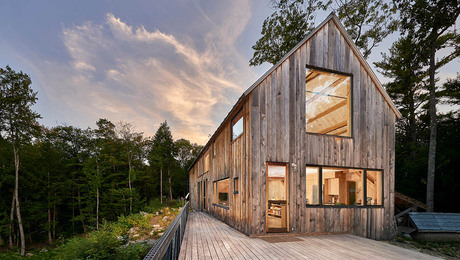Treatments for Problem Windows
These ten solutions will help you deal with impossible openings.

Synopsis: Designer and window expert Deb Barrett takes five window design dilemmas — a bank of windows, windows that are too small, patio doors, arched windows, and bays and bows — and sketches out two options for each to enhance them visually as well as provide privacy, UV protection, and energy efficiency.
For all that windows add to a house— light, ventilation, and views—they also invite problems. Breezes become drafts, sunlight becomes glare, and pleasant neighborhood landscapes morph into ominous black holes at night.
The answer is, of course, window treatments. But the difficulty lies in finding treatments that enhance rather than detract from these “eyes” of the home. The question becomes more difficult when you consider the wide variety of windows found in homes today.
From among them, I’ve chosen five window types that commonly present window-dressing dilemmas: a bank of windows ganged together, very small windows, patio doors, arched windows, and bay and bow windows. For each type, I’ve offered two treatment approaches, along with professional pointers that will make the difference between a window dressing that simply covers up an opening and one that dramatically enhances it.
Scale and proportion
Scale and proportion are two design principles that are essential to great-looking window treatments. Proportion is how the elements within the window treatment relate to each other: the valance to the panels; the swag drop to the cascades. Scale relates the size of the treatment to the size of the room. Ask yourself: Is the window in scale to the room? For instance, small windows look awkward because they are out of scale with the room. Window treatments can correct that.
The Rule of Threes refers to the convention that items grouped together in threes or multiples of three are visually pleasing. Translate this to your window treatments by using three fabrics, three colors, or three components (a shade, a valance, and panels); by tying back draperies in the upper third or lower third of the window; by draping three rather than two swags over a window. Using three of something allows you to use one as a statement, one to contrast, and one to complement.
The Rule of Fifths and Sixths will help you determine how far a valance should drop. Take the total height of the treatment (96 inches, for example) divide it by 6 (16 inches) and then by 5 (19 1⁄4 inches). The valance drop should fall between these two measurements.
For more photos and details on how to fix common window problems, click the View PDF button below.

























